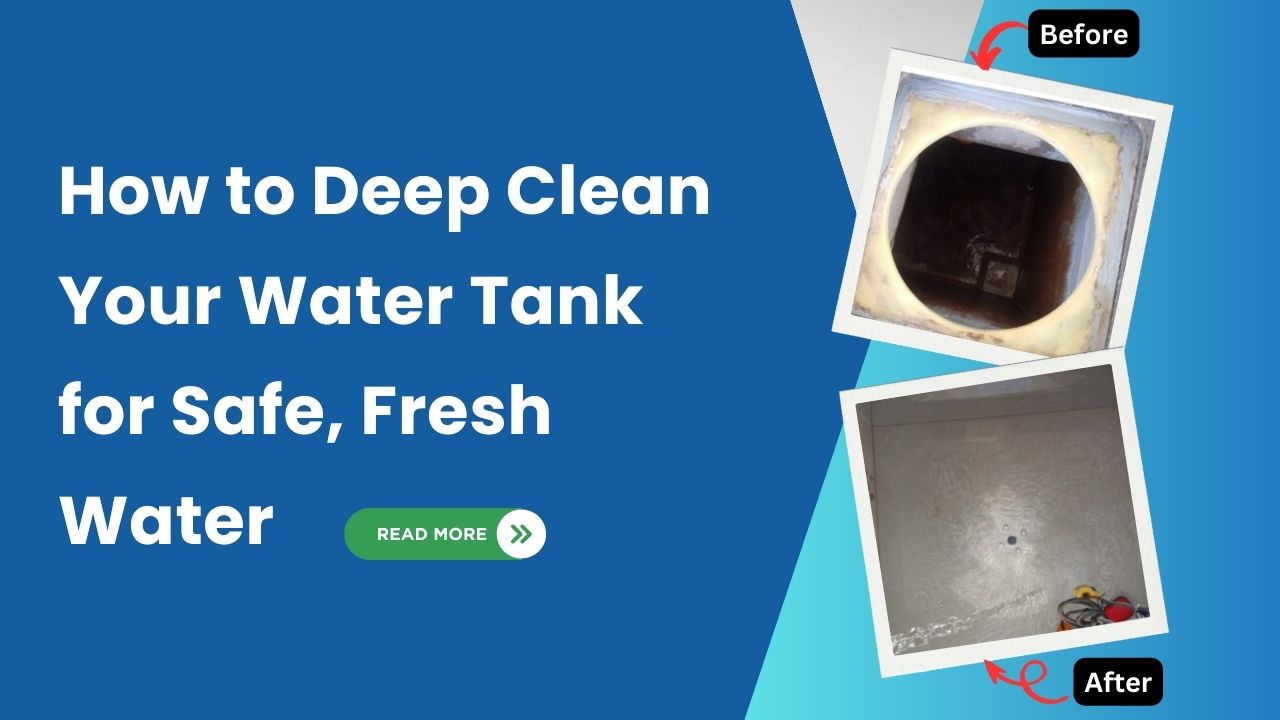Water tanks are essential for storing clean water for drinking, irrigation, and other household needs. Over time, however, these tanks can accumulate dirt, debris, and even bacteria, making regular cleaning essential. Proper cleaning not only ensures that the water remains safe to use but also helps extend the life of the tank. In this article, we will provide a detailed, step-by-step guide to thoroughly clean your water tank.
Step 1: Gather Necessary Supplies
Before you begin the cleaning process, it’s important to have all the required materials on hand. Here’s a checklist of items you’ll need:
Protective gloves
- A scrub brush or long-handled cleaning brush
- Non-toxic cleaning agents (such as vinegar or baking soda)
- Clean water (preferably from a safe source)
- A bucket or container
- A siphoning hose or pump
- A sponge or cloth
- Bleach or hydrogen peroxide (for disinfecting, if necessary)
- A hose or pressure washer (optional, for larger tanks)
Step 2: Empty the Water Tank
The first step in cleaning any water tank is to remove all the water. Turn off the water supply to the tank and use a siphoning hose or pump to drain the tank completely. Make sure to discard the water in an area where it won’t contaminate other water sources. If the water tank is large, consider using a hose to help speed up the process.
Step 3: Scrub the Walls and Floor of the Tank
Once the tank is empty, it’s time to scrub the walls and floor. Use a long-handled scrub brush to clean off any visible dirt, algae, or sediment. Pay special attention to areas where buildup tends to occur, such as corners and the bottom. For tough grime, you can use a mixture of water and mild non-toxic cleaner like vinegar or baking soda.
If you’re cleaning a large tank, a pressure washer can help remove stubborn debris. For smaller tanks, a sponge or cloth can work just as well. Be sure to reach every part of the tank, as any leftover buildup can lead to contamination.
Step 4: Disinfect the Tank (Optional)
After scrubbing, it’s important to disinfect the tank, especially if it’s used for drinking water. The disinfection process helps eliminate harmful bacteria and ensures that the tank remains sanitary.
To disinfect the tank, you can use a diluted bleach solution (1 part bleach to 100 parts water) or hydrogen peroxide. Apply the solution generously to the interior of the tank, making sure to cover all surfaces. Let the disinfectant sit for 30 minutes to an hour to ensure it effectively kills germs. Afterward, rinse the tank thoroughly with clean water to remove any traces of the disinfectant.
Step 5: Clean the Inlet and Outlet Pipes
While cleaning the tank, don’t forget the inlet and outlet pipes, which can also harbor dirt and bacteria. Use a brush or pipe cleaner to scrub the interior of these pipes. If there are any filters attached to the pipes, remove them and clean them separately according to the manufacturer’s instructions.
Step 6: Flush the Tank
Once the tank has been disinfected and all surfaces have been scrubbed, it’s time to flush out any remaining cleaning solutions. Use a hose to rinse the tank thoroughly, flushing out all the residue. If necessary, repeat the rinsing process until the water runs clear and no cleaning solution remains.
Step 7: Inspect for Damage
While the tank is empty, it’s a good idea to inspect it for any damage, such as cracks or leaks. Check the tank’s lid, valves, and connections to ensure everything is intact. Repair or replace any faulty parts before refilling the tank to avoid potential issues.
Step 8: Refill the Tank
Once the tank is completely clean and free of debris, it’s time to refill it with fresh water. Turn the water supply back on and fill the tank slowly to prevent any sudden pressure changes. As the tank fills, monitor the system to ensure there are no leaks or problems with the connections.
Step 9: Regular Maintenance
After cleaning your water tank, it’s essential to establish a regular maintenance routine to keep the tank in optimal condition. Ideally, you should clean your water tank every 6 to 12 months, depending on factors like usage and environmental conditions. Regularly checking the tank for signs of damage, cleaning the inlet and outlet pipes, and monitoring water quality will help prevent contamination and ensure a steady supply of clean water.
Conclusion:
Thoroughly cleaning your water tank is a crucial part of maintaining a safe and reliable water supply. By following these simple steps, you can ensure that your tank stays free from dirt, bacteria, and algae buildup. Regular cleaning and maintenance will not only improve water quality but also help prolong the life of your water tank, ensuring that it continues to serve its purpose efficiently for years to come.
Ensure your water stays safe and fresh—schedule your water tank deep cleaning today with safe water technology professionals! Protect your health and enjoy peace of mind with a cleaner, healthier water supply for your home or business in Dubai.
